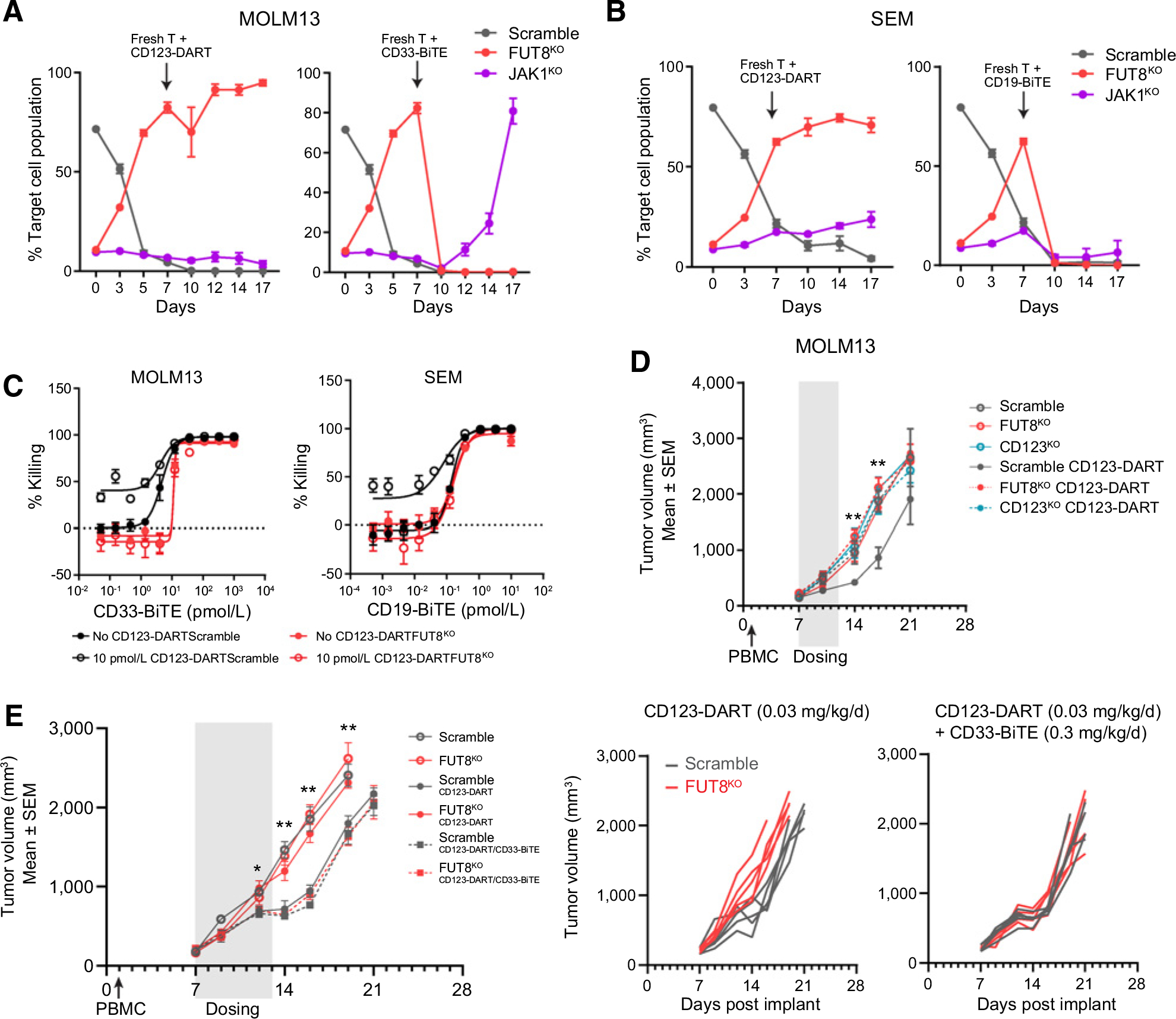Figure 6.

FUT8KO-induced resistance can be managed by dual CD3-bispecific antibody treatment. A and B, Mini-pool validation of MOLM13 (A) and SEM (B) cells in response to CD123-DART and CD33-BiTE/CD19-BiTE. Cells of different genotypes were spiked into the Scramble cells, all with different fluorescent labels (as shown in Supplementary Fig. S6A). The cell mixture was dosed with CD123-DART for the initial 7 days, followed by continued CD123-DART treatment or switched to CD33-BiTE (for MOLM13) or CD19-BiTE (for SEM) for another 10 days. The relative proportion of each genotype was tracked by flow cytometry along the time course (n = 4). C, RTCC assay with single or dual CD3-bispecific antibody. Scramble and FUT8KO MOLM13 or SEM cells were treated with 10 pmol/L CD123-DART in combination with titrated doses of CD33-BiTE or CD19-BiTE, respectively. The killing was normalized to untreated groups (n = 4). The RTCC assay used T-cell:target cell ratio of 1:1, and target cell killing was measured 72 hours after treatment. D, In vivo efficacy study of CD123-DART. MOLM13 of different genotypes (Scramble/FUT8KO/CD123KO) was implanted, and the mice were treated with CD123-DART for 6 consecutive days. The tumor volume was measured on indicated days. E, Comparison of single-agent (CD123-DART) and dual-agent (CD123-DART/CD33-BiTE) bispecific antibody efficacy in vivo (left plot). The tumor growth in each individual mouse implanted with either Scramble or FUT8KO tumors is presented in the right plots. T test was performed comparing FUT8KO tumors with single- and dual-agent treatment. n = 5 for each group. *, P < 0.05 and **, P < 0.01. For each plot, error bars represent SEM.
